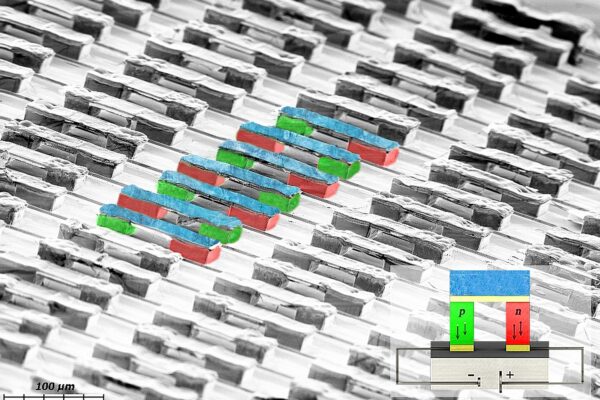
Thermoelectric cooling becomes fit for microtechnology
Thermoelectric materials can convert heat into electrical energy or, conversely, can be used as environmentally friendly cooling elements. In many industrial processes, energy loss occurs in the form of waste heat, which can be converted into electrical energy by thermoelectric generators. This also provides an additional power source in these systems. Another particularly attractive area of application for thermoelectric materials is the cooling of microelectronic components, for example in processors or in heat management in organ implants. To achieve this, thermoelectric generators must be compatible with modern microelectronic systems. In addition, the manufacturing process must be able to be integrated into the established chip production processes. All this has so far proved to be very difficult, so that a broad application of microthermoelectric components has not yet taken place.
Now there is a new promising advance from researchers at the Leibniz Institute for Solid State and Materials Research Dresden (IFW). They introduced an important innovation into the deposition process of the thermoelectric bismuth tellurium compound. An additional gold electrolyte bath immediately after deposition forms a protective gold layer on the thermoelectric elements. This interface considerably reduces the resistance between the thermoelectric material and the contact layer, which has a very positive effect on efficiency and functional stability in endurance tests. The microthermoelectric components produced in this way have very fast reaction times of only one millisecond and a high reliability of more than 10 million cycles and over 30 days of stable cooling performance. In the opinion of the researchers involved, the improvement of these parameters represents a decisive step towards the broad application of thermoelectric components.
Related articles:
Tin selenide ‘nanoflakes’ for miniature thermoelectric devices
Micro energy collectors for the Internet of Things
 If you enjoyed this article, you will like the following ones: don't miss them by subscribing to :
eeNews on Google News
If you enjoyed this article, you will like the following ones: don't miss them by subscribing to :
eeNews on Google News




